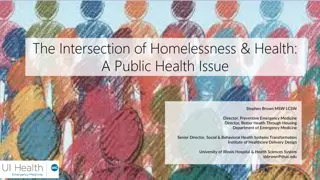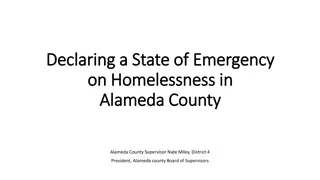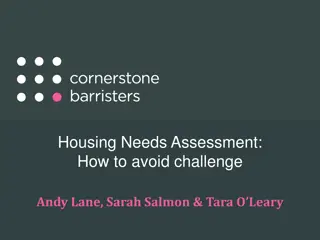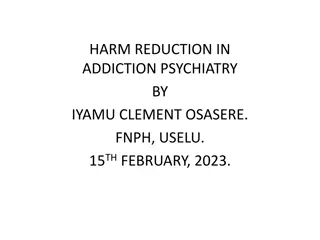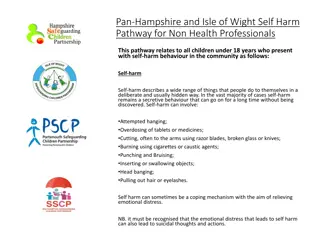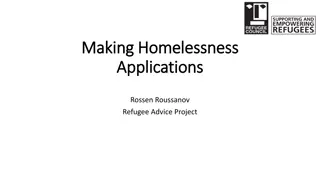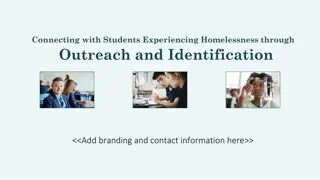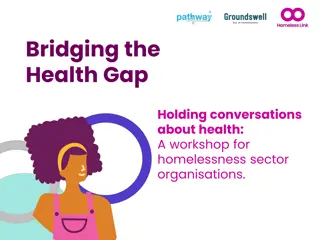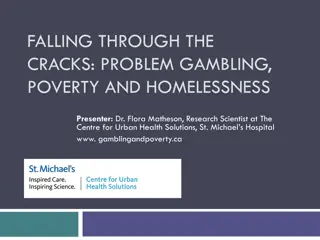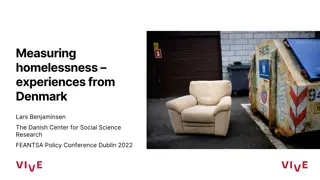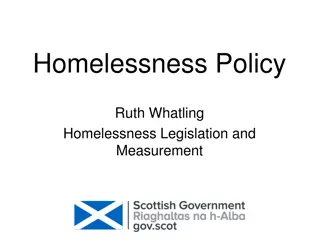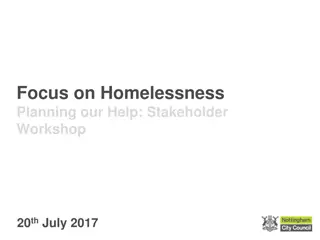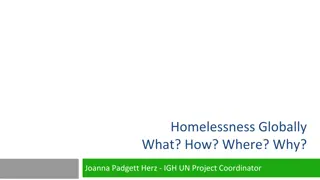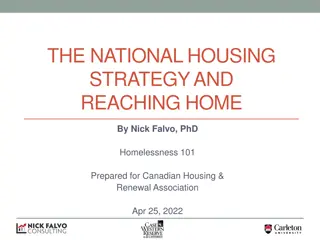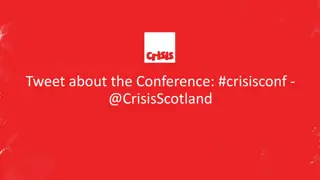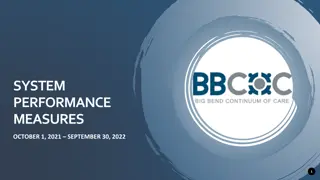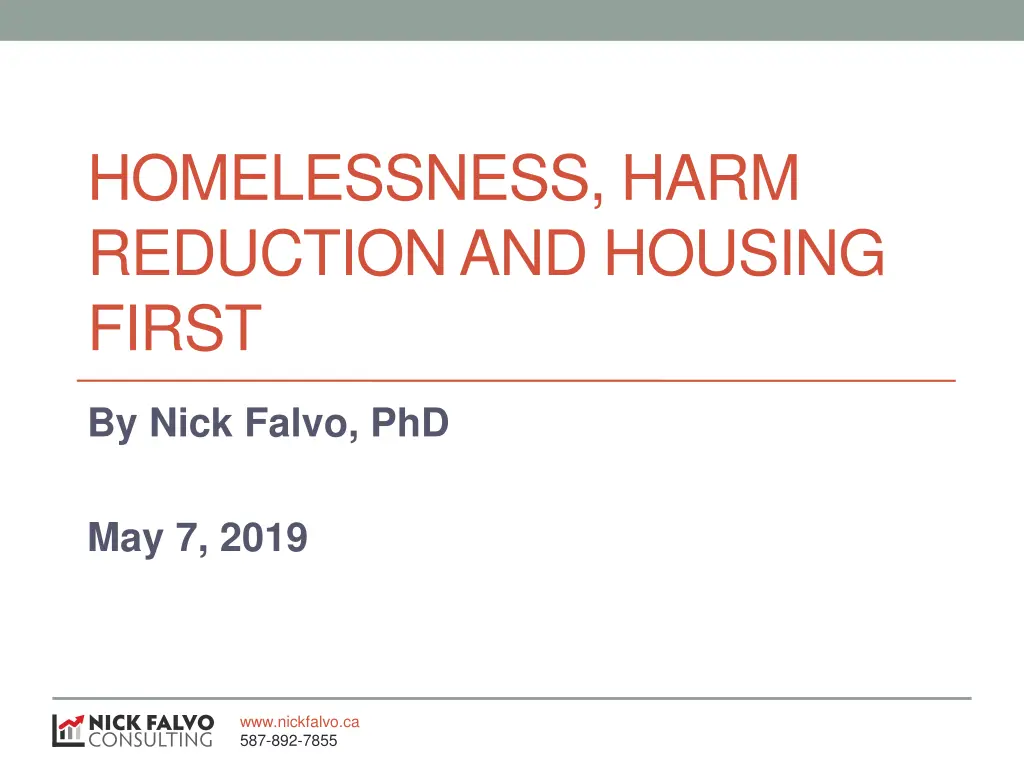
Understanding Factors Contributing to Substance Use Among Homeless Individuals
Explore the correlation between homelessness and substance use, with traumatic events and residential school history being identified as significant factors. This study sheds light on key considerations in addressing substance use within homeless populations.
Download Presentation

Please find below an Image/Link to download the presentation.
The content on the website is provided AS IS for your information and personal use only. It may not be sold, licensed, or shared on other websites without obtaining consent from the author. If you encounter any issues during the download, it is possible that the publisher has removed the file from their server.
You are allowed to download the files provided on this website for personal or commercial use, subject to the condition that they are used lawfully. All files are the property of their respective owners.
The content on the website is provided AS IS for your information and personal use only. It may not be sold, licensed, or shared on other websites without obtaining consent from the author.
E N D
Presentation Transcript
HOMELESSNESS, HARM REDUCTION AND HOUSING FIRST By Nick Falvo, PhD May 7, 2019 www.nickfalvo.ca 587-892-7855
Overview Homelessness in Alberta Homelessness and substance use Harm reduction Housing First Recovery Services Task Force www.nickfalvo.ca 587-892-7855
Note References for all sources presented in this slide deck can be found in the notes section at the bottom of each slide. www.nickfalvo.ca 587-892-7855
Lets talk a bit about homelessness. www.nickfalvo.ca 587-892-7855
Homelessness in Alberta www.nickfalvo.ca 587-892-7855
Homelessness in Alberta (contd) www.nickfalvo.ca 587-892-7855
Homelessness in Alberta (contd) www.nickfalvo.ca 587-892-7855
Homelessness in Alberta (contd) www.nickfalvo.ca 587-892-7855
Homelessness in Alberta (contd) All of this data I ve just presented comes from the province-wide report written after the 2018 Point-in-Time Count. The Calgary Homeless Foundation (CHF) led the Calgary part of that effort. CHF has also advocated both across Alberta and Canada to make space for Indigenous respondents to identify by Nation. www.nickfalvo.ca 587-892-7855
Homelessness in Alberta (contd) In 2018, CHF also provided financial support to Kainai Nation (Blood Tribe) so they could participate in the Alberta rural Point-in-Time Count (at the time, criteria to access federal funding excluded reserves). www.nickfalvo.ca 587-892-7855
Homelessness: Substance Use A 2015 Winnipeg study asked what factors made a homeless person more likely to be a person who uses drugs (PWUD). Answer: Traumatic events, esp. residential school history. Also, mental and physical health conditions. www.nickfalvo.ca 587-892-7855
Homelessness: Substance Use (contd) In my twelve years of work as a physician in Vancouver s Downtown Eastside, I learned a lot from my patients. Many of them were First Nations people I saw that the sources of addiction do not originate in the substances people use but in the trauma they endured. In fact, the self- medications my patients employed were an understandable response to a set of unnatural circumstances, namely the historical trauma inflicted on First Nations throughout Canadian history, and up to the present. Dr. Gabor Mat www.nickfalvo.ca 587-892-7855
First Nations Health Authority A recent First Nations Health Authority report out of BC identifies factors that lead to substance use. They include: 1. Racism 2. Intergenerational trauma (e.g., residential schools) 3. Reduced access to mental health and addiction treatment (which is often reported by members of FNs). www.nickfalvo.ca 587-892-7855
Homelessness: Shelters A 2014 study looked at the use of homeless shelters in Atlantic Canada (all 4 prov s). It found that shelters focus on providing shelter and that they do not have a strong mandate to fully support PWUDs. www.nickfalvo.ca 587-892-7855
Homeless shelters A 2018 report found the following barriers in some homeless shelters in Canada: 1. Having to ask staff to access harm reduction supplies. 2. Shelters refusing services to ppl under the influence. 3. Rigid entry process (e.g., extensive paperwork, need for multiple pieces of documentation). www.nickfalvo.ca 587-892-7855
Homeless shelters (contd) A 2018 study by University of Victoria researchers found it s very challenging for staff in homeless shelters to properly engage with PWUD, since on-site use of illicit substances is typically prohibited. Staff give out supplies but forbid its on-site use. Shelter washrooms can become de facto unsupervised consumption sites. www.nickfalvo.ca 587-892-7855
Lets talk a bit about harm reduction. www.nickfalvo.ca 587-892-7855
Harm reduction Harm reduction is both a philosophy and a set of strategies that focuses on reducing the harms of substance use, not reducing consumption per se. Pauly et al., 2013 www.nickfalvo.ca 587-892-7855
Harm reduction: A gateway Services such as needle exchange and supervised injection often reach those who are the most marginalized in society and are a gateway to other health, housing and social services including referrals to housing, income supports, detoxification, treatment and counselling services. Pauly et al., 2013 www.nickfalvo.ca 587-892-7855
Harm reduction: The evidence Needle distribution services reduce risk-taking behavior Supervised consumption services prevent overdoses, reduce risk-taking behaviour, and increase referrals to other supports. Opioid substitution therapy reduces crime and other harms; it also provides regular contact with healthcare services. Safer inhalation kits reduce the risk of transmission of blood- borne diseases. www.nickfalvo.ca 587-892-7855
Supervised Consumption Services Supervised Consumption Services are one form of harm reduction. Supervised consumption services (SCS) consist of providing a safe, hygienic environment in which people can use drugs with sterile equipment under the supervision of trained staff or volunteers. www.nickfalvo.ca 587-892-7855
SCS in Alberta During 2018 alone: Calgary s SCS site saw nearly 52,000 visits, resulting in more than 700 overdose reversals. Lethbridge s saw nearly 128,000 site visits, resulting in more than 1,300 overdose reversals. www.nickfalvo.ca 587-892-7855
SCS in Alberta (contd) www.nickfalvo.ca 587-892-7855
Supervised Consumption Services (contd) Today, more than 100 formal SCS exist in Australia, Denmark, Germany, Luxembourg, the Netherlands, Norway, Spain, France, Belgium and Switzerland, in addition to Canada. As of Feb 2019, 28 SCS were operating under an exemption from Canada s federal government. www.nickfalvo.ca 587-892-7855
Lets talk a bit about Housing First. www.nickfalvo.ca 587-892-7855
Housing First Housing First focuses directly on housing people regardless of current patterns of substance use. Pauly et al., 2013 www.nickfalvo.ca 587-892-7855
Housing First (contd) Harm reduction is a key principle of Housing First, where individuals are not required or expected to undergo treatment for substance use or to abstain in order to access and keep permanent housing. Pauly et al., 2013 www.nickfalvo.ca 587-892-7855
Housing First (contd) Housing First does not mean housing only. Ergo: Other social supports are crucial to making Housing First work. Such additional supports may include treatment and reduced substance use. www.nickfalvo.ca 587-892-7855
Housing First: Canadian experience Growing popularity Effective Cost effective Effective narrative www.nickfalvo.ca 587-892-7855
Lets talk a bit about a recent study done in Calgary. www.nickfalvo.ca 587-892-7855
Calgary Recovery Services Task Force Task Force commissioned a research study, funded in part by the Calgary Homeless Foundation. Researchers interviewed 300 persons experiencing homelessness in Calgary specifically, persons who had experienced at least 6 consecutive months of absolute homelessness. Study completed in 2016. www.nickfalvo.ca 587-892-7855
Calgary Recovery Services Task Force (contd) Nearly one-third of participants identified as Indigenous (First Nations, Inuit, or Metis). Of those identifying as Indigenous, 20% had attended a residential school, while another 63% had family members who had attended a residential school www.nickfalvo.ca 587-892-7855
Calgary Recovery Services Task Force (contd) Nearly three-quarters of Indigenous participants reported having lived in foster care or been removed from their family as children. www.nickfalvo.ca 587-892-7855
Calgary Recovery Services Task Force (contd) ACE Study questions were used to assess the childhood experiences of research participants. These questions produce an overall ACE score that assesses cumulative childhood stress. www.nickfalvo.ca 587-892-7855
Calgary Recovery Services Task Force (contd) Average ACE scores A score of 4 is considered high (i.e. high stress) Group Score Study Men Women Indigenous Men 4.43 4.21 5.02 6.07 5.88 Women 6.38 www.nickfalvo.ca 587-892-7855
Calgary Recovery Services Task Force (contd) Nearly 1 in 4 respondents felt they needed detox services and had not received them, or had not received enough support from the detox services they accessed. 1 in 5 participants said they needed residential treatment services and had not received them, or had not received enough support from the residential treatment services they had accessed. www.nickfalvo.ca 587-892-7855
Calgary Recovery Services Task Force (contd) For services such as hospital, residential treatment services, and outpatient services, long wait lists were a frequent reason given for not received adequate care. www.nickfalvo.ca 587-892-7855
Calgary Recovery Services Task Force (contd) About half of participants said they felt housing services in Calgary were difficult or very difficult to access. www.nickfalvo.ca 587-892-7855
Name change The Calgary Recovery Services Task Force now calls itself the Collaborative for Health and Home. They have a website: http://calgarychh.ca/ Contact: Quentin Sinclair <quentins@calgaryhomeless.com> www.nickfalvo.ca 587-892-7855
Recent developments In 2018, the Calgary Homeless Foundation (CHF) supported the Tsuut ina Nation in their request for funding so they could upgrade their men s shelter facility. When CHF recently received a private gift for research, it prioritized Indigenous peoples. CHF is currently engaging through ceremony and protocol with Treaty 7 Nations to understand the on-reserve needs and the flow of people and impact on Indigenous homelessness in Calgary. www.nickfalvo.ca 587-892-7855
Recent developments (contd) Initial work of bringing together a team of experts including an Indigenous researcher to engage in work was led by myself and is currently unfolding. www.nickfalvo.ca 587-892-7855
Summary Racism and trauma (including intergenerational trauma) have a major impact on substance use. Harm reduction and Housing First are important principles in responding to the overdose crisis. Access to services remains a major challenge, especially for persons experiencing homelessness. www.nickfalvo.ca 587-892-7855
Acknowledgements Lorraine Barnaby Shannon Beavis Leslie Hill Diana Krecsy Bren Little Light Katelyn Lucas Adam Melnyk Katrina Milaney Bernie Pauly Steven Richardson Chris Sarin Quentin Sinclair Lorie Steer www.nickfalvo.ca 587-892-7855
Thank You Nick Falvo Cell: 587-892-7855 Email: falvo.nicholas@gmail.com www.nickfalvo.ca 587-892-7855

